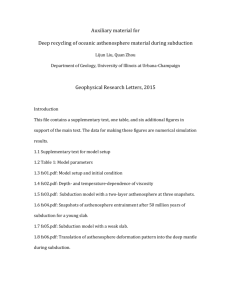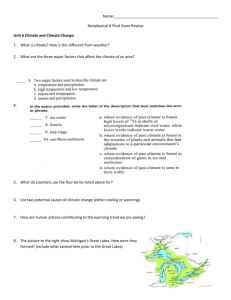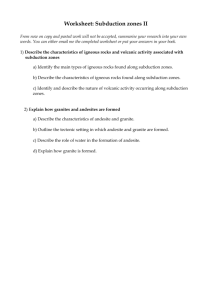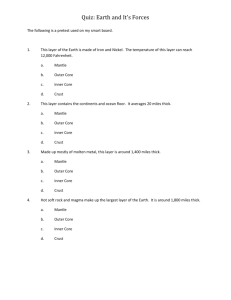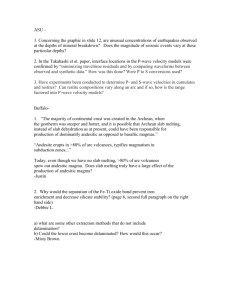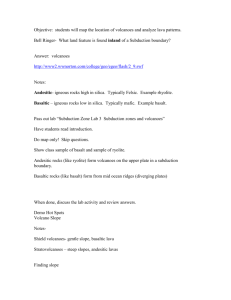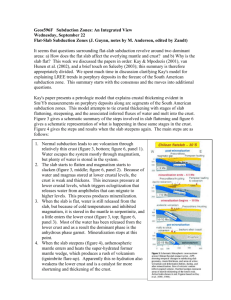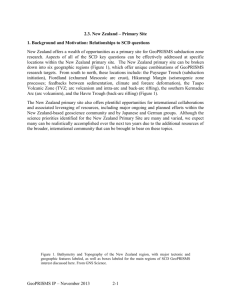Abstract Title - SWISS GEOSCIENCE MEETINGs
advertisement
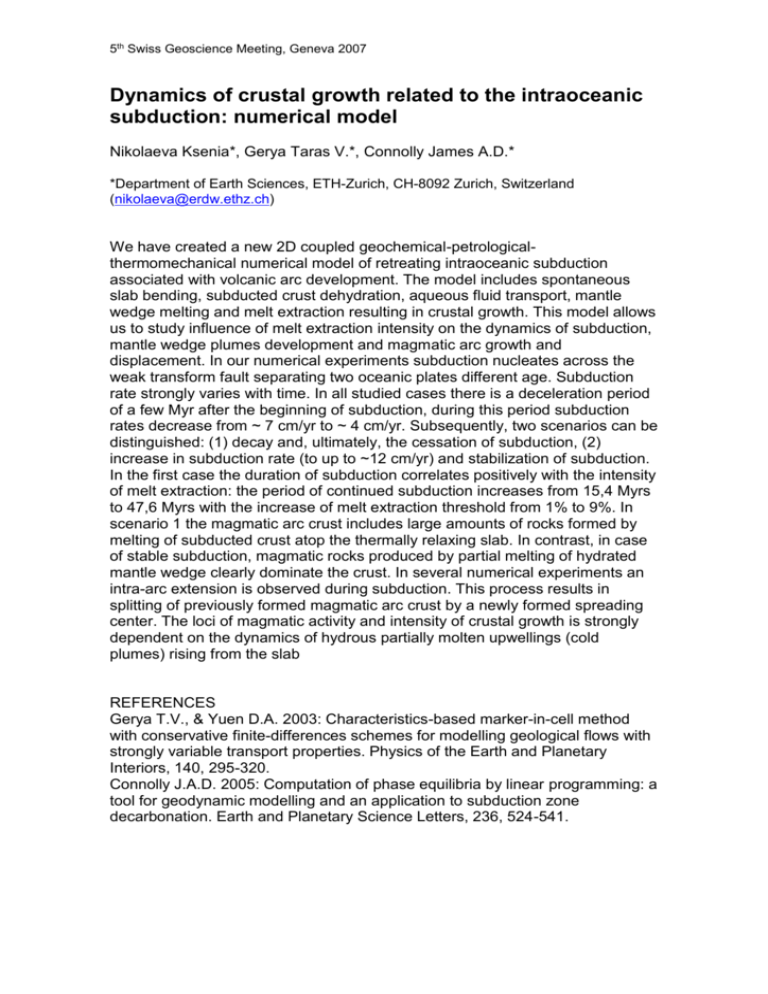
5th Swiss Geoscience Meeting, Geneva 2007 Dynamics of crustal growth related to the intraoceanic subduction: numerical model Nikolaeva Ksenia*, Gerya Taras V.*, Connolly James A.D.* *Department of Earth Sciences, ETH-Zurich, CH-8092 Zurich, Switzerland (nikolaeva@erdw.ethz.ch) We have created a new 2D coupled geochemical-petrologicalthermomechanical numerical model of retreating intraoceanic subduction associated with volcanic arc development. The model includes spontaneous slab bending, subducted crust dehydration, aqueous fluid transport, mantle wedge melting and melt extraction resulting in crustal growth. This model allows us to study influence of melt extraction intensity on the dynamics of subduction, mantle wedge plumes development and magmatic arc growth and displacement. In our numerical experiments subduction nucleates across the weak transform fault separating two oceanic plates different age. Subduction rate strongly varies with time. In all studied cases there is a deceleration period of a few Myr after the beginning of subduction, during this period subduction rates decrease from ~ 7 cm/yr to ~ 4 cm/yr. Subsequently, two scenarios can be distinguished: (1) decay and, ultimately, the cessation of subduction, (2) increase in subduction rate (to up to ~12 cm/yr) and stabilization of subduction. In the first case the duration of subduction correlates positively with the intensity of melt extraction: the period of continued subduction increases from 15,4 Myrs to 47,6 Myrs with the increase of melt extraction threshold from 1% to 9%. In scenario 1 the magmatic arc crust includes large amounts of rocks formed by melting of subducted crust atop the thermally relaxing slab. In contrast, in case of stable subduction, magmatic rocks produced by partial melting of hydrated mantle wedge clearly dominate the crust. In several numerical experiments an intra-arc extension is observed during subduction. This process results in splitting of previously formed magmatic arc crust by a newly formed spreading center. The loci of magmatic activity and intensity of crustal growth is strongly dependent on the dynamics of hydrous partially molten upwellings (cold plumes) rising from the slab REFERENCES Gerya T.V., & Yuen D.A. 2003: Characteristics-based marker-in-cell method with conservative finite-differences schemes for modelling geological flows with strongly variable transport properties. Physics of the Earth and Planetary Interiors, 140, 295-320. Connolly J.A.D. 2005: Computation of phase equilibria by linear programming: a tool for geodynamic modelling and an application to subduction zone decarbonation. Earth and Planetary Science Letters, 236, 524-541.
